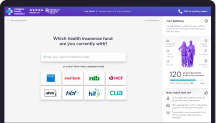COVID-19 has been a catalyst for massive changes in many facets of Australian life. Antenatal care is one aspect of life that has changed dramatically since COVID-19 became an issue. Let’s take a look at some of the most important ways the Coronavirus crisis has changed maternity care in Australia:
1. Many Antenatal and Postnatal Classes Have Migrated Online
Before COVID-19 disrupted maternity care in Australia, it was commonplace for expectant mums to attend antenatal and postnatal education classes in face-to-face settings. Nowadays, many of these educational opportunities are still available, but it’s more commonplace for them to be held online rather than in person.
2. There Are More Telehealth Consultations and Fewer Face-to-Face Checkups
It’s normal for pregnant women to see their doctors or midwives seven times before giving birth. However, after the onset of COVID-19, many appointments that would have happened face-to-face have been moved to the telephone, Zoom or similar platforms. While this reduces mum’s chances of exposure to COVID-19, there is a tradeoff; it also increases the chances that a risk factor or problem with the pregnancy will be missed.
The reduced numbers of face-to-face checkups has led to a rise in stillbirth numbers in the UK. It’s likely that Australians are at risk for this too. It’s therefore essential that pregnant women be proactive about voicing any concerns that may arise during their pregnancies to their midwife or doctor.
3. Some Hospitals Cancelled Prenatal Tours of Their Facilities
Before COVID-19, many hospitals and NICUs offered in-person prenatal tours to expectant mums who showed interest in booking into their facilities to give birth. In some cases, these have been cancelled completely; in other cases, they are now being conducted via webinar.
4. Pregnant Women Frequently Face Restrictions on In-Hospital Support From Friends and Family
In hopes of reducing everyone’s exposure to the virus, healthcare providers have been taking steps to limit the numbers of people entering and using their hospitals and facilities. Many have implemented policies restricting the numbers of support people who can accompany a pregnant woman as she gives birth.
5. Women Are Leaving the Hospital Earlier Than They Would Have Previously
Prior to COVID-19, women typically remained at the hospital for at least a couple of days after giving birth. Now the recommendation is for women to be discharged within 4-6 hours of a successful childbirth.
6. Water Births and Bathing Have Been Restricted at Some Healthcare Facilities
Some Australian hospitals have revoked pregnant women’s access to water for bathing and birthing. This is a restriction that many midwives have disputed.
7. Pregnant Women Are Increasingly Seeking Options Besides Public Hospital Birth
The majority of Australian women have historically chosen public hospitals as the place they birth their newborns. Despite the health crisis, this option is still the most popular, but COVID-19 has motivated many women to seek other options.
For some individuals, the health crisis prompted a shift in priorities. Private hospital birth, which allows for the possibility of a private room, has become more attractive to expectant mums who are concerned about reducing their exposure to the virus. Previously, some thought of a private hospital room as being an expensive and unnecessary frill; in contrast, many people would agree that a private room now seems more like money well spent. This is particularly true in cases where pregnancy cover can be utilised to defray the cost.
Home birth hasn’t historically been a hugely popular option in Australia, but the arrival of COVID-19 has prompted an increasing number of pregnant women to choose this option.
There are multiple reasons for the shift. For some women, the primary concern is limiting exposure to the virus, and home birth can help to accomplish this. For others, home birth provides a means of circumventing one or more of the restrictions that have been implemented for hospital births. In cases where an expectant mum wants to be supported by multiple people, or to have a water birth, giving birth at home can provide a convenient way to take control of the birth experience.
These are 7 of the most significant ways maternity care in Australia has changed in response to COVID-19. It is unclear as to how long these changes will remain in place. The uncertainties surrounding the virus have prompted healthcare administrators to be extremely cautious in their approach to maternity care. The changes mentioned above are largely a result of those cautions.
As long as COVID-19 remains a public health issue, it is likely that many healthcare providers will continue to take the cautious approach in delivering maternity care. If you are thinking of having a baby, it would be prudent to take these things into consideration as you make your birth plan.
Are You Thinking of Starting a Family? Consider Enrolling in a New Families Health Insurance Plan
If you think it’s possible that a private hospital birth might be the way you want to go, we invite you to research your options for new families health insurance plans. You can use our search engine to quickly and easily compare health insurance plans in order to find the one that is precisely ideal for your unique situation.





